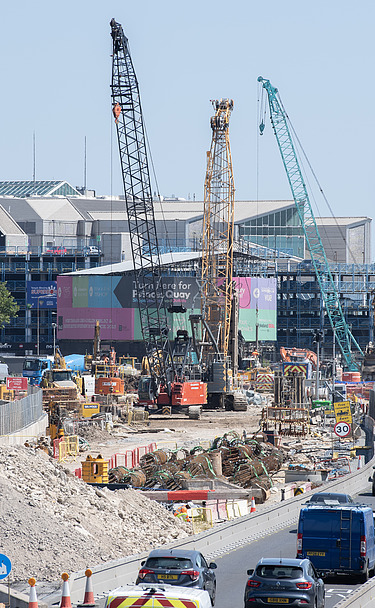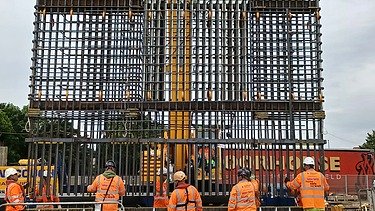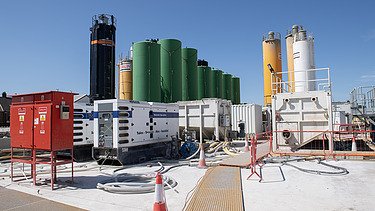

Client:
Balfour Beatty Civil Engineering Ltd for National Highways
Location:
Kingston-upon-Hull, UK
Build time:
July 2020 - December 2024
A63 Castle Street Improvement Scheme
The A63 underpass project is part of a broader improvement scheme for the city of Hull and involves constructing a 400-metre-long underpass to enhance connectivity between the city centre and the docks.
The project includes lowering two directional carriageways over a 1km stretch, with ZÜBLIN Ground Engineering contracted to execute the ground engineering works.
Ground Conditions & Engineering Solutions
The project’s location near the River Humber presents challenging ground conditions. The underpass is surrounded by structures and assets that are sensitive to ground movements.
To mitigate risks of ground movement and water ingress, an innovative combination of techniques was implemented. It is one of the most complex road projects of its kind in the UK.
Comprehensive laboratory testing and field trials were conducted to refine and validate the technical solution before the project's launch. This preparation ensured a smooth start to the complex main phase of the project and significantly reduced the level of risk.
- Diaphragm walls - Two 320m-long, 20m-deep retaining walls, anchored with barrettes at each end of the underpass to minimise lateral movements.
- Jet grout base slab - A 25,000m³ slab formed from 7,000 jet grout columns to minimise groundwater intrusion and support temporary lateral stability during excavation and before base slab construction. This low-permeability base plug was securely anchored into the chalk with tension piles.
- Tension piles - 366 piles (900mm in diameter), up to 32m deep, anchor the underpass into chalk, countering buoyancy uplift. Thirteen larger piles (1,200mm in diameter) support plunge columns for the bridge's central pier.
- Deep dry mixing - Applied to temporarily stabilise soft soil before diaphragm wall excavation and permanently at other locations.

Installation of the soft eye to connect the underpass to the pumping shaft.
Construction & Logistical Challenges
The project takes place on a confined site bordered by active roads, requiring:
- Precise orchestration and sequencing of works - Soil stabilisation, diaphragm wall installation, piling, and jet grouting occur concurrently in a constrained space, creating a need for seamless coordination to ensure the project progresses as planned.
- Traffic management - To keep traffic running, multiple phases of traffic switches had to take place overnight or on weekends, presenting logistical and planning challenges.
- Urban site constraints - The environment resembles an inner-city basement excavation, demanding careful spatial and risk management.

The confined site is positioned between A63 East/West bound roads and slip roads.
State-of-the-Art Spoil Treatment and Environmental Considerations
A state-of-the-art spoil treatment technology was deployed to minimise the impact of jet grouting spoils on the environment and the site's vicinity. A combination of mechanical and chemical methods allowed for the reduction of wastewater and the reuse of water for jet grouting.
Each step of the spoil treatment process was monitored in real time and continuously assessed, ensuring compliance with environmental requirements and regulations.

Spoil treatment facilities
Awards and nominations
- Ground Engineering Awards 2022: Technical Excellence Award for Geotechnical Trials – Winner
- Ground Engineering Awards 2023: Health & Safety Award for Ground Engineering Works – Winner
- EFFC Safety Innovations Award 2024: Piling Casing Handler – Highly Commended
- British Geotechnical Association’s Fleming Award 2022 – Finalist
- Ground Engineering Geotechnical Team of the Year 2024 – Finalist